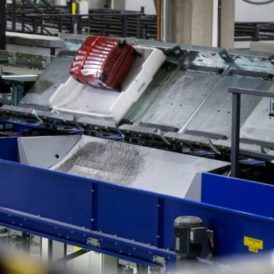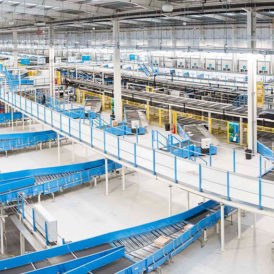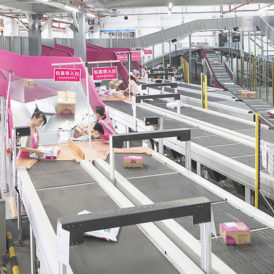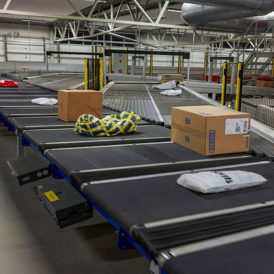-
- Baggage handling systems
- Logistics Systems Technology
- Conveying Technology
- Opencast Mining Systems
- Stockyard Systems
- Mineral Processing
- Port Technology
- Loading Technology
- Filling Technology
- Palletising Technology
- Packaging Technology
- Airport Software Suite
- Automated Container Unloader
- BEUMER autover® Independent Carrier System
- Baggage Loader
- Baggage Manipulator
- Baggage Unloader
- CrisBag® Independent Carrier System
- CrisBag® Self Bag Drop
- CrisBelt® Conveyor System
- CrisCheck® Check-In Conveyor
- CrisClaim® Baggage Carousels
- CrisStore® Dynamic Racking Solution
- Security Screening
- Tilt-Tray Loop Sortation System
- CEP Software Suite
- Warehouse Control System
- Automatic Parcel Singulator
- BEUMER Tipping Station
- BG Line Sorter
- BG Parcel Belt Conveyor
- BG Sorter® CB Cross-Belt
- BG Pouch System
- BG Sorter® ET Tilt-Tray
- Air-supported belt conveyor
- Apron Conveyors
- Belt Apron Conveyors
- Belt Bucket Elevators
- Bucket Elevators
- Central Chain Bucket Elevators
- Components
- Conveyor Systems for Alternative Fuels (AFR)
- Drive Stations
- Feeding Hoppers
- Heavy Duty Belt Bucket Elevators
- Hopper Cars
- Mobile Conveyors
- Overland Belt Conveyors
- Pipe Conveyors
- Screw conveyor
- Shifting Heads
- Tripper Cars
- Troughed Belt Conveyors
- U-Shape Conveyors
- Bucket Wheel Excavators
- Bucket Chain Excavators
- Belt Wagons
- Mass Distributors
- Crawler-Mounted Conveyor Bridges
- Crawler-Mounted Spreaders
- In-Pit Crushing Systems
- Cable Reel Cars
- Transport Crawlers
- Stackers
- Semi-portal Scrapers
- Portal Scrapers
- Side Scrapers
- Slewing Scrapers
- Bridge-type Reclaimers
- Bucket Wheel Reclaimers
- Stacker Reclaimers
- Circular Stacker-Reclaimers
- Customer Support
-
-
Baggage Storage and batch building systems
The design of an efficient baggage storage system can fulfill operational baggage system performance requirements beyond just allowing passengers' bags to be checked in hours before flight time. Today's baggage storage and batch building systems also have the ability to support dynamic storage operation, efficient management of baggage peak volumes, and optimum usage of the baggage make-up area and resources.
optimising your baggage storage and batch building solution
Selecting the ideal baggage storage system involves considering various operational factors beyond mere capacity.
By integrating multi-storage functionalities, our baggage storage systems can enhance BHS efficiency in handling both baggage transfer and outbound baggage, leading to operational cost savings and improved staff and equipment utilisation.
With no two airport requirements being the same, it’s essential to assess factors like baggage handling capacity, peak volumes, and terminal space to determine the most suitable baggage storage design and technology. This tailored approach ensures that the baggage storage solution aligns seamlessly with the specific needs of the airport.
features
Storage capacity
Operational handling requirements (early baggage storage, batch building, baggage-on-demand, single bag access)
Flexible design and modularity in terms of building height and storage size
Need for storage clearance and fall back operation
Baggage tracking, bag access and cycle times
Maintenance access requirements
Baggage storage solution for every type of airport
A well-designed baggage storage function can integrate with most baggage handling system technologies. There are a number of solutions for integrating a baggage storage system and depending on the system size and airport and airline requirements, the baggage storage can be designed to integrate various baggage handling services and solutions from a simple Early Bag Storage (EBS) to a dynamic storage solution enabling batch building operationin the make-up process.
Baggage storage solutions vary from conveyor based Early Baggage Storage (EBS) systems that simply allow passengers’ bags to be checked in hours before flight time, to more dynamic storage solutions, sometimes referred to as warehouse or baggage hotel solutions. Rack storage designs such as the CrisStore®, make it possible to build batches of bags inside the storage and release a desired number of bags for make-up in an automated speed loading process.
Line-based storage in totes is another type of ‘one bag per tote’ storage configuration that also enables the identity and position of each item of baggage to be tracked and retrieved at all times within the EBS system.
-
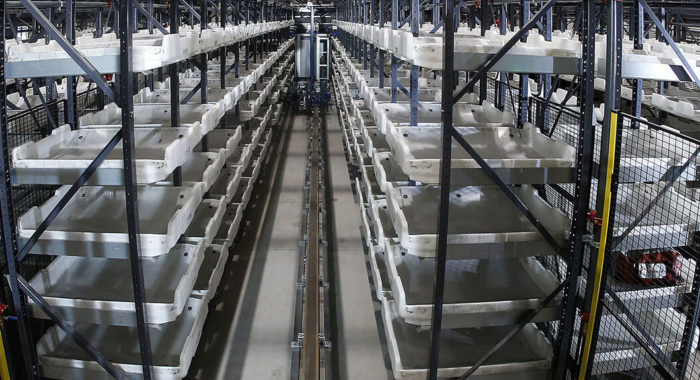 The CrisStore® rack-based storage system can be designed to enable airports of all sizes improve the baggage handling capacity, accuracy and security.Details
The CrisStore® rack-based storage system can be designed to enable airports of all sizes improve the baggage handling capacity, accuracy and security.Details -
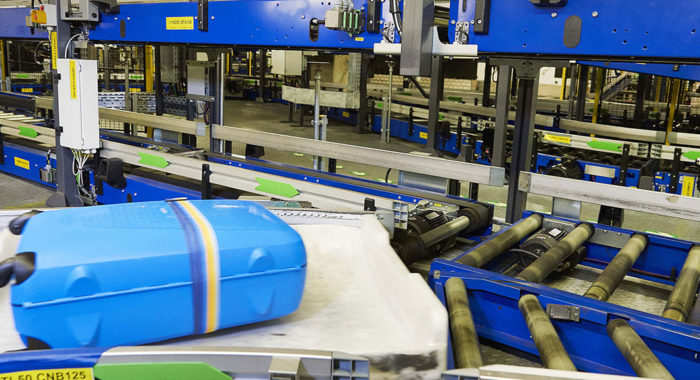
CrisBag® Independent Carrier System
The CrisBag® tote-based independent carrier system for baggage handling delivers 100% tracking and traceability at every stage of the baggage handlingDetails
Conveyor Based Storage Solution
Checked baggage can be temporarily stored on conveyor belt lines as a simple and economical solution to buffering early baggage. A conveyor-based storage solution design can offer optimised use of the BHS while also offering better passenger service.

Early Bags on Conveyor Lanes
By use of a simple yet effective conveyor-based storage solution, a baggage handling system design can have more efficiency – and the airport can offer a more satisfying passenger experience. The conveyor-based EBS solution can easily integrate with a convey-based or a high-speed baggage handling and sortation technology.
When used in conveyor and loop sortation systems, bags are usually stored in conveyor lanes until ready for make-up. In a cart-based sortation solutions, bags will be stored on conveyor EBS lines or remain in their assigned carts between screening and make-up if the system design and capacity allows it.
Case Studies
Meet us at an airport baggage handling trade fair

Do you have any questions?
Do you have any questions?
Your Contact Person
Mortiz Bender
Director, Sales & Business Development, Airport
